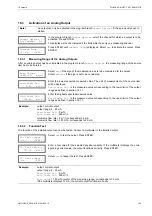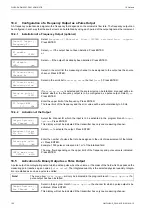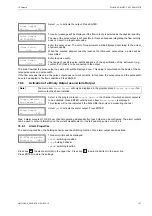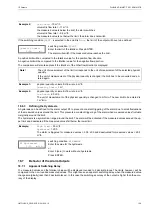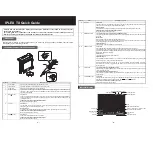
19 Troubleshooting
FLUXUS ADM 8027, F801, ADM 8127B
UMFLUXUS_F8V4-6-1EN, 2018-10-10
133
The measuring signal is received but no measured values can be obtained
• An exclamation mark
!
in the lower line on the right indicates that the defined upper limit of the flow velocity is exceeded
and, therefore, the measured values are marked as invalid. The limit has to be adapted to the measuring conditions or
the check has to be deactivated (see section 13.5).
• If no exclamation mark
!
is displayed, a measurement at the selected measuring point is not possible.
Loss of signal during the measurement
• If the pipe had been run empty: Was there no measuring signal afterwards? Contact FLEXIM.
• Wait briefly until acoustic contact is reestablished. The measurement can be interrupted by a temporarily higher propor-
tion of gas bubbles and solids in the fluid.
The measured values substantially differ from the expected values
• Wrong measured values are often caused by wrong parameters. Make sure that the entered parameters are correct for
the measuring point.
• If the parameters are correct, see section 19.5 for the description of typical situations in which wrong measured values
are obtained.
19.2
Selection of the Measuring Point
• Make sure that the recommended min. distance to any disturbance source is observed (see chapter 5, Tab. 5.2).
• Avoid measuring points with deposit formation in the pipe.
• Avoid measuring points in the vicinity of deformations and defects on the pipe and in the vicinity of welds.
• Measure the temperature at the measuring point and make sure that the transducers are suitable for this temperature.
• Make sure that the outer pipe diameter is within the measuring range of the transducers.
• When measuring on a horizontal pipe, the transducers have to be mounted on the side of the pipes.
• A vertical pipe always has to be filled at the measuring point and the fluid should flow upward.
• No gas bubbles should form (even bubble-free fluids can form gas bubbles when the fluid expands, e.g., upstream of
pumps and downstream of great cross-section enlargements).
19.3
Maximum Acoustic Contact
Observe the instructions in chapter 9.
19.4
Application Specific Problems
The entered sound speed of the fluid is wrong
The entered sound speed is used to calculate the transducer distance and is therefore very important for the transducer
positioning. The sound speeds stored in the transmitter only serve as orientation.
The entered pipe roughness is not appropriate
Check the entered value. The state of the pipe should be taken into account.
Measurements on porous pipe materials (e.g., concrete or cast iron) are only possible under certain conditions
Contact FLEXIM.
The pipe lining may cause problems during the measurement if it is not firmly attached to the inner pipe wall or
consists of an acoustically absorbing material
Try measuring on a liner free section of the pipe.
Highly viscous fluids strongly attenuate the ultrasonic signal
Measurements on fluids with a viscosity > 1000 mm²/s are only possible under certain conditions.
A higher proportion of gas or solids in the fluid scatter and absorb the ultrasonic signal and therefore attenuate
the measuring signal.
A measurement is impossible if the value is
≥
10 %. If the proportion is high, but < 10 %, a measurement is only possible
under certain conditions.
The flow is in the transition range between laminar and turbulent flow where flow measurement is difficult
Calculate the Reynolds number of the flow at the measuring point with the program FluxFlow (free download: www.flex-
im.com). Contact FLEXIM.







